- Details
- Hits: 1578
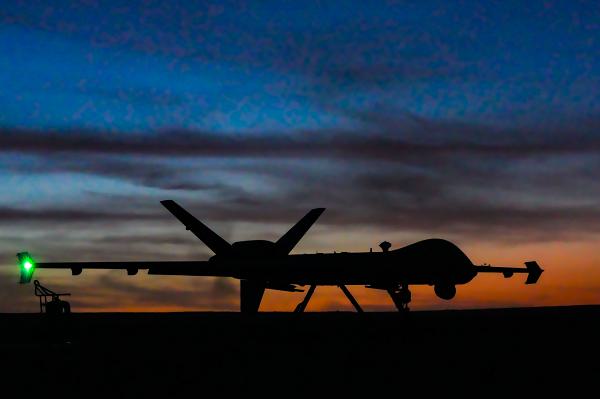
Melrose Air Force Range, New Mexico. (January 16, 2025): On January 3, 2020, President Donald Trump ordered an airstrike that killed Iranian General Qassem Soleimani as he and other Iran-backed leaders were leaving the Baghdad airport. President Trump declared him "directly and indirectly responsible for the deaths of millions of people". The strike underscored America’s promise to terrorists everywhere, no one escapes the Reaper.
In this photo by Airman 1st Class Gracelyn Hess, an MQ-9 Reaper flown by the elite 1st Special Operations Wing rests on a dirt strip at sunset following a successful landing. Developed by General Atomics Aeronautical Systems, the Reaper is the first “hunter-killer” drone equipped with the latest U.S. air-to-ground weaponry. Originally designed for high-altitude surveillance, the Reaper has been upgraded to carry four Hellfire missiles plus two laser-guided 500-pound bombs.
- Details
- Hits: 1452
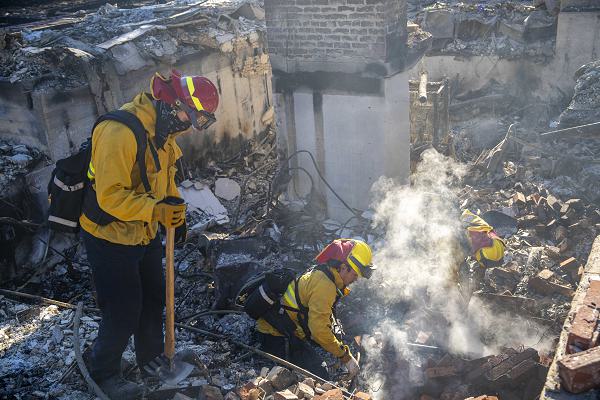
Moreno Valley, California. (January 21, 2025): As the wildfires continue to roar across southern California, members of the Army National Guard and the Marines have joined Air Force firefighters battling the blazes outside Los Angeles. In this photo by Captain Johnny Chau, firefighters from March Air Reserve Base assist in fire suppression by locating and extinguishing residual fires and “hot spots” that might reignite.
Currently, there are over 1,800 California National Guardsmen, up over a thousand since last week, who are assisting firefighters and maintaining order. Military Police units have bolstered local law enforcement efforts to control traffic and prevent looting. Meanwhile, five hundred active-duty Marines stationed at Camp Pendleton along with ten Navy helicopters equipped with water delivery buckets have joined the relief efforts. Following up from last week, the Air National Guard flew six more flights during the weekend, dropping more than 16,000 gallons of fire suppressant.
- Details
- Hits: 1548
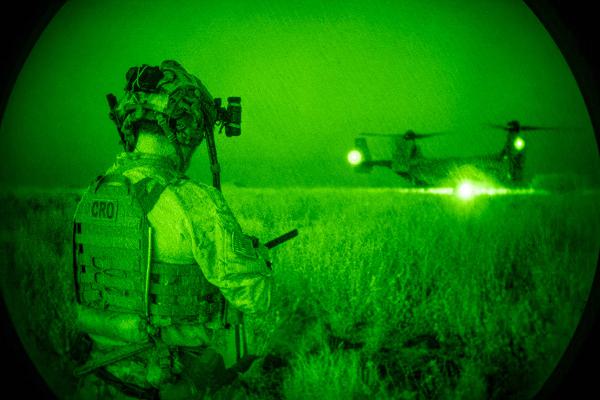
Camp Lemonnier, Djibouti. (January 17, 2024): On any given day, there are over three thousand U.S. personnel serving in the Horn of Africa, from pilots to sailors, who depend on the 82nd Expeditionary Rescue Squadron when they need help. In this photo by Staff Sergeant Jana Somero, an Airman secures the landing zone after being dropped off by an MV-22B Osprey during a personnel recovery training exercise. The 82nd Squadron, part of the 449th Air Expeditionary Group, is made up of pararescue personnel who do search and rescue missions for the U.S. Africa Command.
The Horn of Africa is beset by numerous conflicts, from squabbles between Sudan and Ethiopia to Islamist militants in Kenya and the al-Shabaab insurgency in Somalia.
- Details
- Hits: 1839
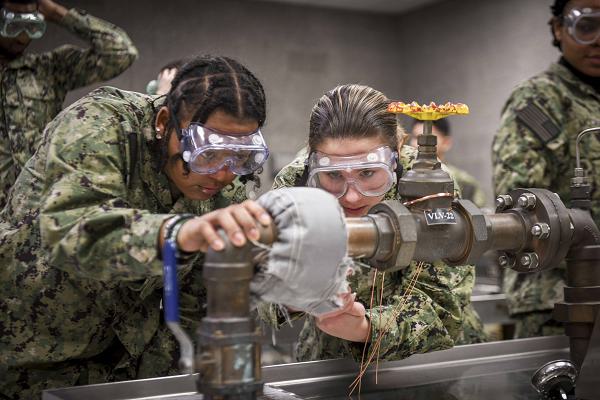
Naval Station Great Lakes, Illinois. (January 9, 2025): Most people do not realize the sheer number of engineering jobs available in a massive organization like the U.S. Navy. With approximately 450,000 Sailors manning three hundred ships and submarines and flying 3,700 aircraft, the Navy needs enlisted engineers. In this photo by Petty Officer 2nd Class Matt Hall, Sailors practice installing a flange shield on a valve, one of many engineering tasks they will encounter once aboard ship. The Navy’s Surface Warfare Engineering School offers a variety of engineering courses that provide both technical and on-the-job experience in nearly every field of engineering.
The road to a Navy engineering career begins with the Basic Engineering Common Core, a ten-week program on mechanical theory, piping systems, the Navy’s Maintenance Material Management System, and essential safety precautions. From there, the majority of students advance to the Engineering Professional Apprenticeship Career Track. This 34-day course delves deeper into various engineering skills students will need as they start their careers.
- Details
- Hits: 1498
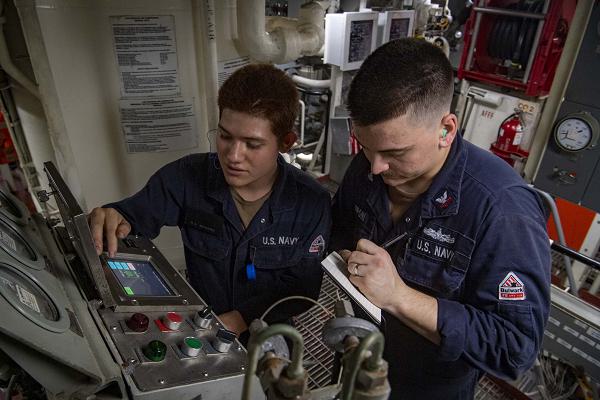
Pacific Ocean. (January 11, 2025): In the Navy, there are little-known heroes who deliver power to the ship, and the entire crew depends on them. In this photo by MC3 Brianna Walker, Gas Turbine Systems Technician (Mechanical) Fireman Manuel Gutierrez trains Electrician's Mate 2nd Class Robbie Zepponi on how to note readings on an air compressor aboard the Arleigh Burke-class guided-missile destroyer USS Sterett. They are responsible for keeping giant turbine engines running around the clock and the survival of the ship is literally in their hands.
Arleigh Burke-class destroyers are powered by two General Electric LM2500 turbines that generate 33,600 shaft horsepower allowing the ship to achieve speeds of thirty-one knots. These LM2500 turbines drive ninety five percent of all current U.S. Navy ships.
- Details
- Hits: 1647
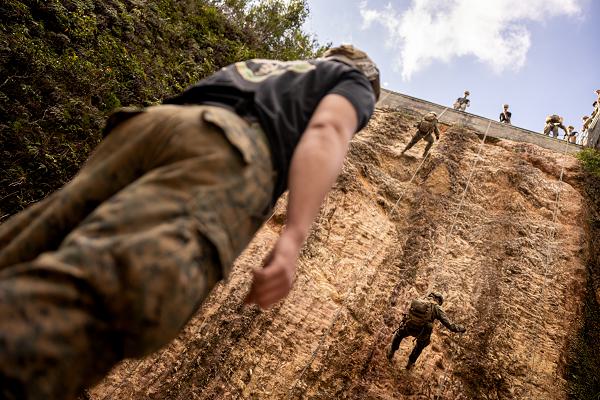
Okinawa, Japan. (January 8, 2025): Acrophobia sounds like a terrible disease, but it is really quite common. Fear of Heights. In this photo by Sergeant Noah Masog, Sergeant Brian Evans supervises Marines rappelling down a steep cliff during a company exercise at the Jungle Warfare Training Center here. All troopers experience, to varying degrees, some level of acrophobia while learning to rappel.
Symptoms of this irrational fear are intense anxiety, trembling, and shortness of breath. For many, even thinking of heights or being in a high place can be debilitating. To conquer these fears, troops must have confidence in their rappelling skills and the quality of their equipment.


